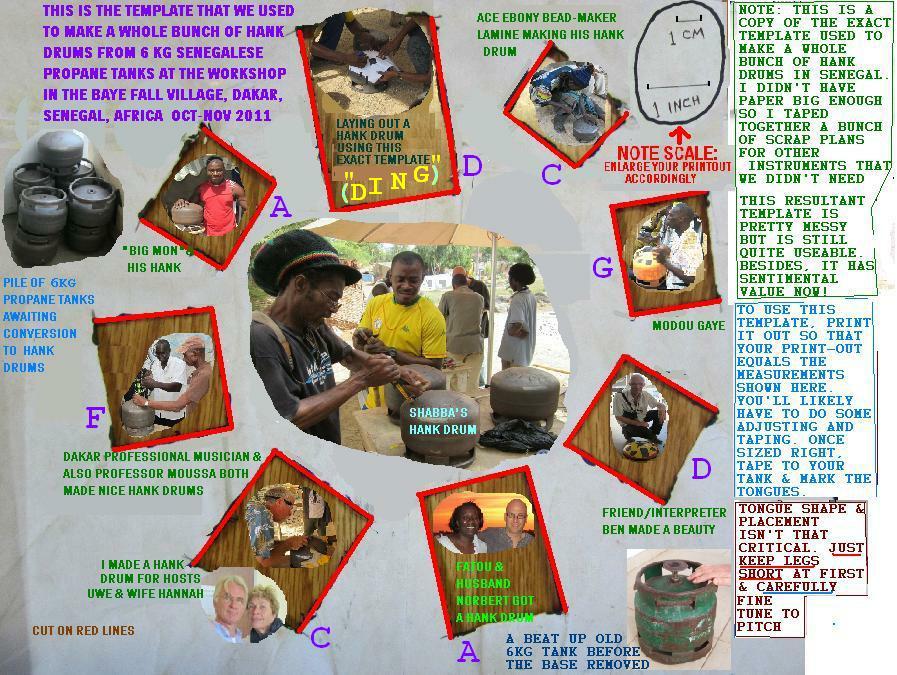
You'll note that (for the first time) I resort to using rectangular shaped tongues instead of my usual curved tongue-shaped tongues. This was done for simplicity - not having that many tools in the African workshop village. I might add that I noticed no difference in either tone or volume when switching to rectangular tongues. The tongues having straight lines, each of the three cuts per tongue were easily started using a Dremel tool with fiberglass reinforced "cutoff wheel" - cut through just enough to allow a saber-saw blade to be inserted for the remainder of each cut. Each side of each tongue was cut short a quarter inch or so to allow fine-tuning with a bare fine-toothed hacksaw blade. Speaking of tuning -- before I left for Africa, I bought, on sale, a Planet-wave brand (by D'Addario) portable strobe chromatic tuner. I have nothing but high praise for this little beauty which performed flawlessly in the intense African sun, sand & humidity in our outdoors workshop. Many hours were spent bringing all the hank-drums into exact pitch - all using up only one 9 volt battery. I might add that the African folks who attended the workshop very much liked my hank-drums! They took right to them and we had a number of first-rate African music sessions where the hanks fit in exceptionally well with the other, more traditional African instruments. I was told by many there that hank-drums, by virtue of their simplicity, good sound, fun playing and ease of construction may well spread in Africa. Whether this comes to pass or not, the good folks of Senegal certainly did like them!Dennis Havlena - 11/30/2011 Webpage at www.DennisHavlena.comClick here to access my webpage